Top 10 hardy flower bulbs
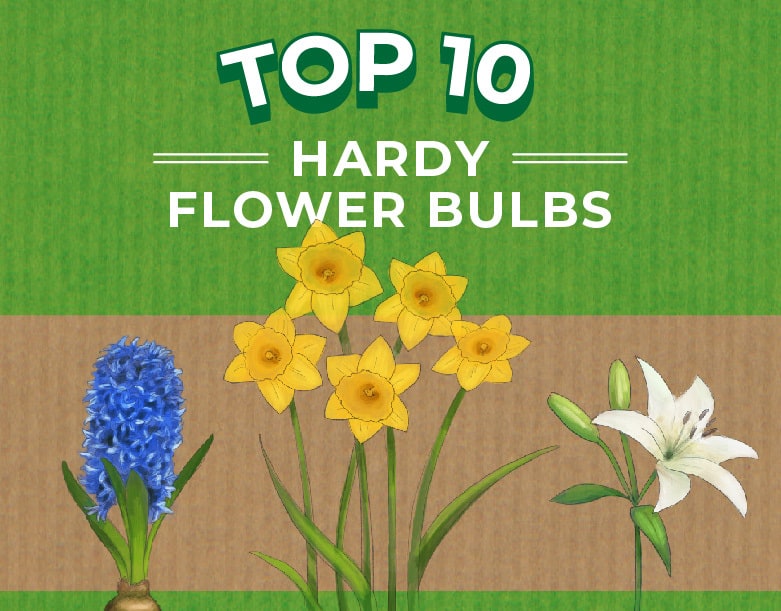
Hardy flower bulbs bring a splash of colour to borders and containers and are some of the easiest plants to grow. Plant a mixture of spring, summer and autumn flowerers - like daffodils, hyacinth and cyclamen - for a succession of blooms all year long.
We've created a beautiful infographic listing our top ten hardy flower bulbs, which you'll find at the bottom of this page. And here are the ten best flower bulbs one by one:
1. Eucomis
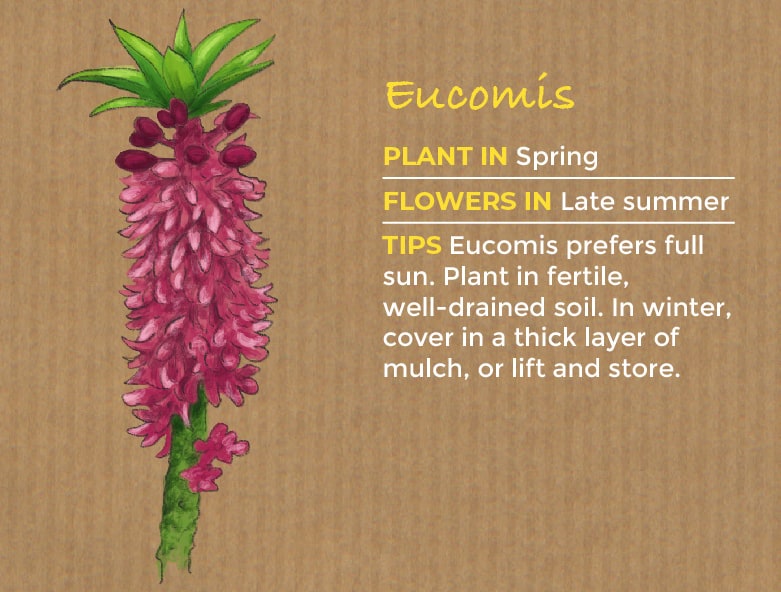
Eucomis are commonly called the pineapple lily and its easy to see why - with their star-shaped flowers and tuft of leaves on top. But dont let their exotic appearance put you off, as theyre quite easy to grow. Hailing from Southern Africa - where they grow on swamp and grassland and on riverbanks - eucomis do well in full sun and moist, but well-drained, soil.
2. Lily of the valley
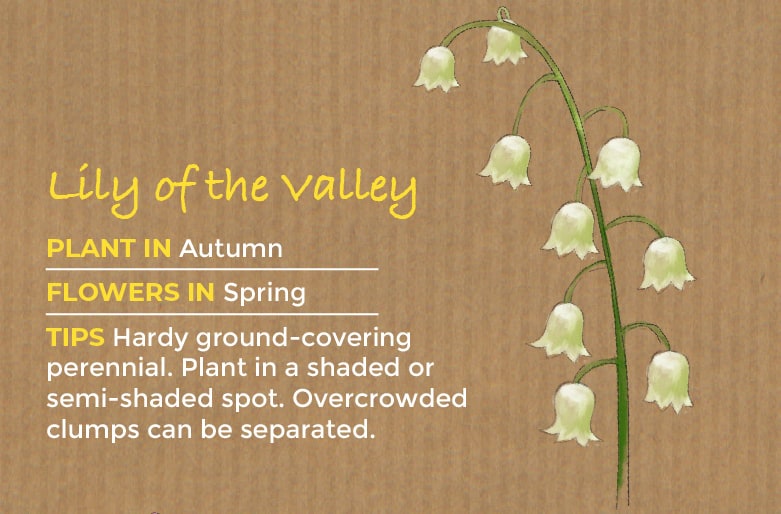
Sweetly scented lily of the valley produces small, delicate bell-shaped flowers in the spring and bright red berries in the summer. This woodland plant loves a shady, moist spot in the garden. A favourite of royal brides - Kate Middleton and Grace Kelly both had lily of the valley in their bouquets - this pretty flower is nevertheless highly toxic.
3. Cyclamen
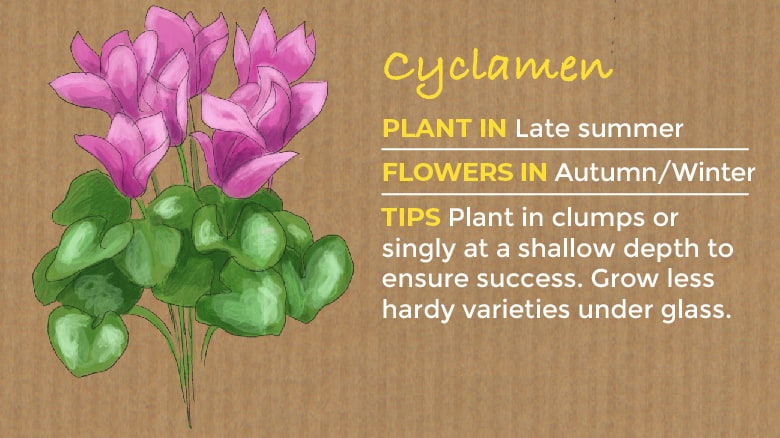
Hardy cyclamen brings colour to your garden in late-autumn and winter, when little else is flowering. They are easy to grow as long as they dont get too dry or have too much sun. Cyclamen is a woodland plant, so its happiest growing in a shady spot - perhaps under a tree - with snowdrops and primroses as bedfellows.
4. Daffodils
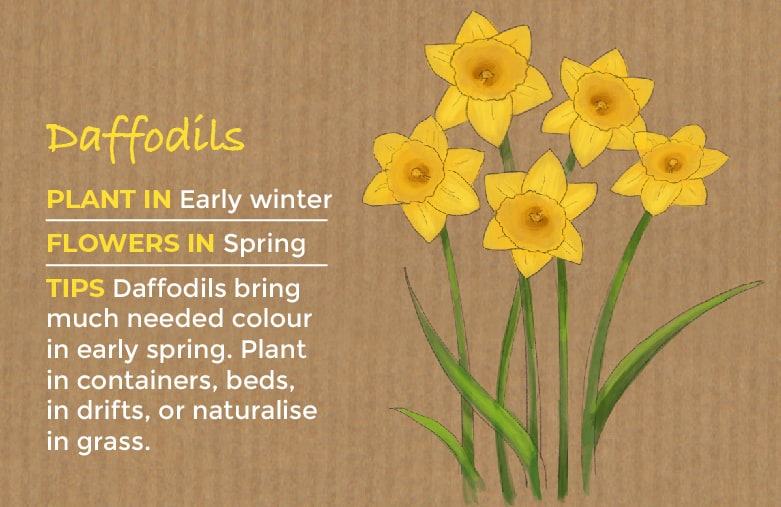
Daffodils are a welcome sight after the drab winter months, bursting into flower in early spring and filling the garden with their beautiful trumpet-shaped blooms. Daffodils are easy to grow in sun or light shade. Some cultivars have a wonderful perfume and all make excellent cut flowers.
5. Hyacinth
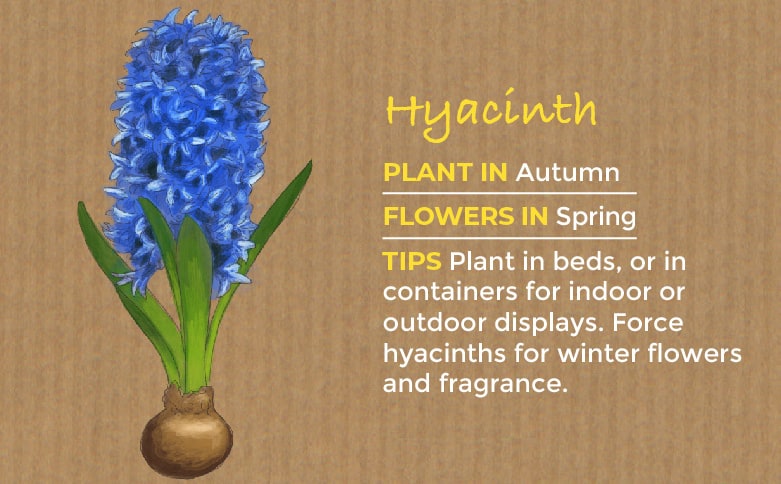
With glorious purple-blue flowers and a heady perfume, hyacinths make them a stunning addition to any garden. Those planted outdoors will burst into flower come spring. But specially heat-treated bulbs can be forced indoors for a delicious display during the winter months. Originating in the Eastern Mediterranean (from Southern Turkey through to Palestine), they prefer fertile, well-drained soil and full sun.
6. Snowdrops
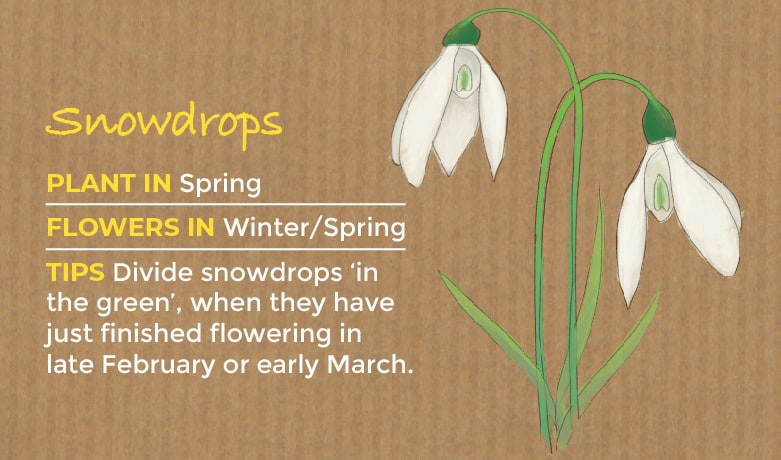
Everyone loves snowdrops - the sight of these first flowers of the year is happy confirmation that spring is on her way. These pretty drooping flowers are a delightful addition to your garden. And snowdrops keep on giving year after year. A moist soil will encourage bulbs to multiply - divide them while they are in the green and share them with your friends.
7. Nerine bowdenii
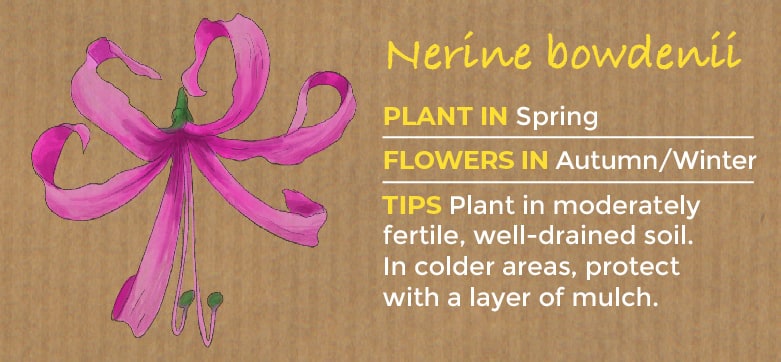
Nerine bowdenii, or Bowden lily, originates in South Africa and is named after one Athelstan Cornish-Bowden, a British land surveyor who sent the bulb back to England in 1904. Although it is quite hardy, nerine bowdenii grows best in warm, well-drained soil. It is not a true lily, but its bright-pink, frilly flowers do resemble lily blooms.
8. Lily
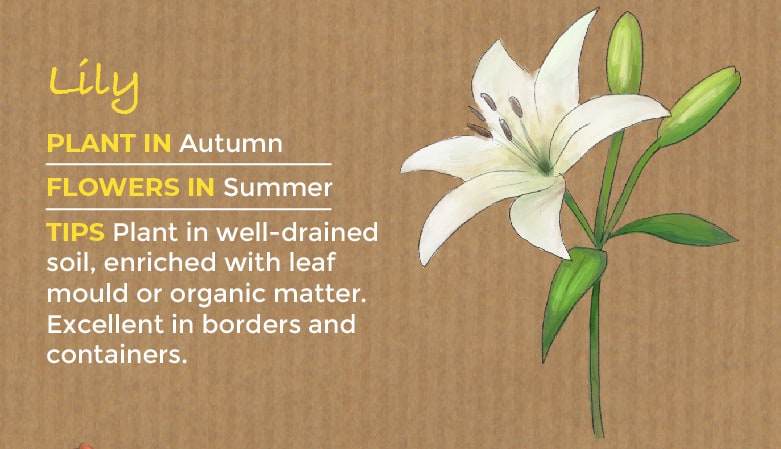
Lilies bring a hint of the exotic to your garden with their exquisite blooms and powerful, sweet scent. They are very easy to grow in well-drained borders and containers, and they make wonderful cut flowers. To the Victorians, lilies represented love and devotion and they are the still the 30th wedding anniversary flower.
9. Tulips
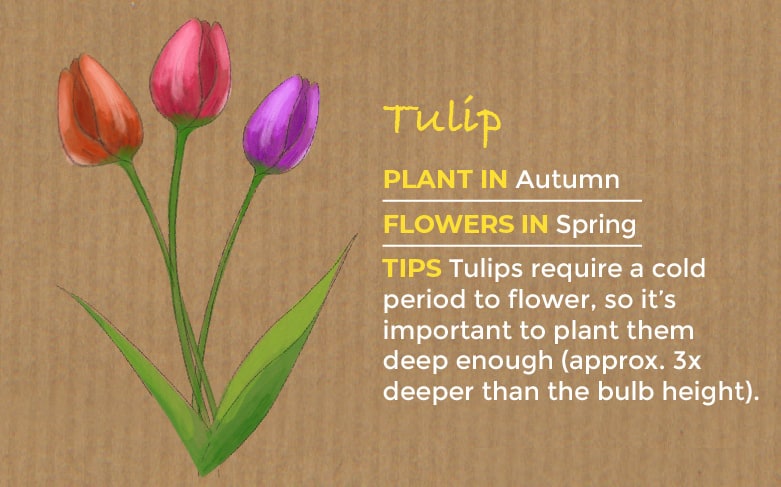
Bright, cheerful and available in almost every colour of the rainbow, tulips are one of the most popular flowering bulbs. These showy flowers caused such a stir when they were introduced into Europe in the 17th entury, that tulip mania caused the first speculative bubble, ruining many Dutch investors. Tulips make excellent bedding plants, do well in containers and are wonderful as cut flowers.
10. Liatris
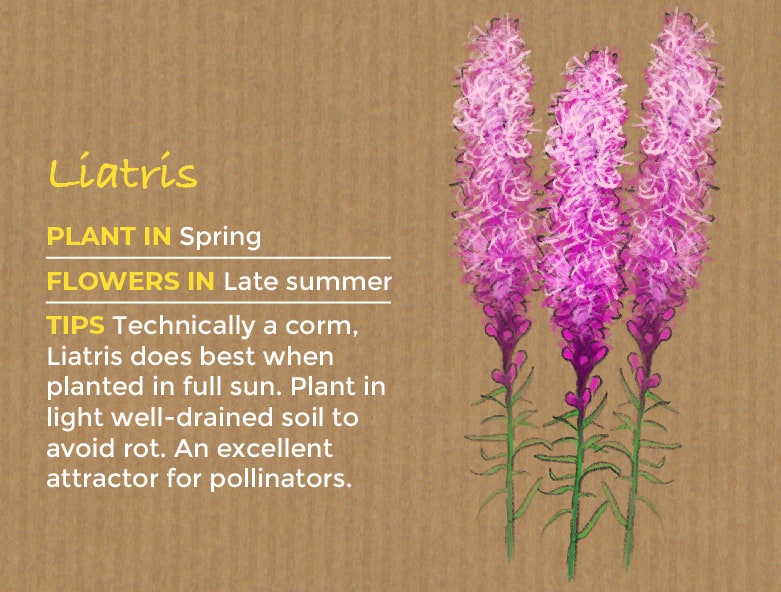
Pink bottle-brush flower spikes and grass-like foliage make liatris a stunning ornamental. Liatris - commonly known as gayfeather - is a perennial that survives the winter in corms (so is not technically a bulb). Bees and butterflies adore them, so youll be blessed with many pollinators with liatris blooming in your borders.
Here's the our infographic in full - if you'd like to share it or use it on your own site, check out the details underneath

To publish this infographic on your own site, please use the following embed code, or share on Twitter by pressing the blue button:
TweetSee all Top 10 articles
Popular Top 10 Articles
- Top 10 Winter Vegetables
- Top 10 Potato Varieties
- Top 10 Easy-to-grow Fruit
- Top 10 Winter Bedding Plants
- Top 10 Summer Bedding Plants
- Top 10 Spring Flowering Bulbs
- Top 10 Summer Flowering Bulbs
- Top 10 Autumn/ Winter Flowering Bulbs
- Top 10 Evergreen Shrubs
- Top 10 Evergreen Shrubs for Small Gardens
- Top 10 Easy-to-grow Flowers
- Top 10 Cut Flowers
- Top 10 Hanging Basket Plants
- Top 10 Plants for Patios
- Top 10 Houseplants
- Top 10 Climbing Plants
- Top 10 Perennial Plants
- Top 10 Hardy Plants for Winter
- Top 10 Winter Garden Tips
- Top 10 Ornamental Grasses
Sign Up For Exclusive Special Offers




© 2024 Thompson & Morgan. All rights reserved. A division of Branded Garden Products Limited.
Sign up for exclusive offers!



